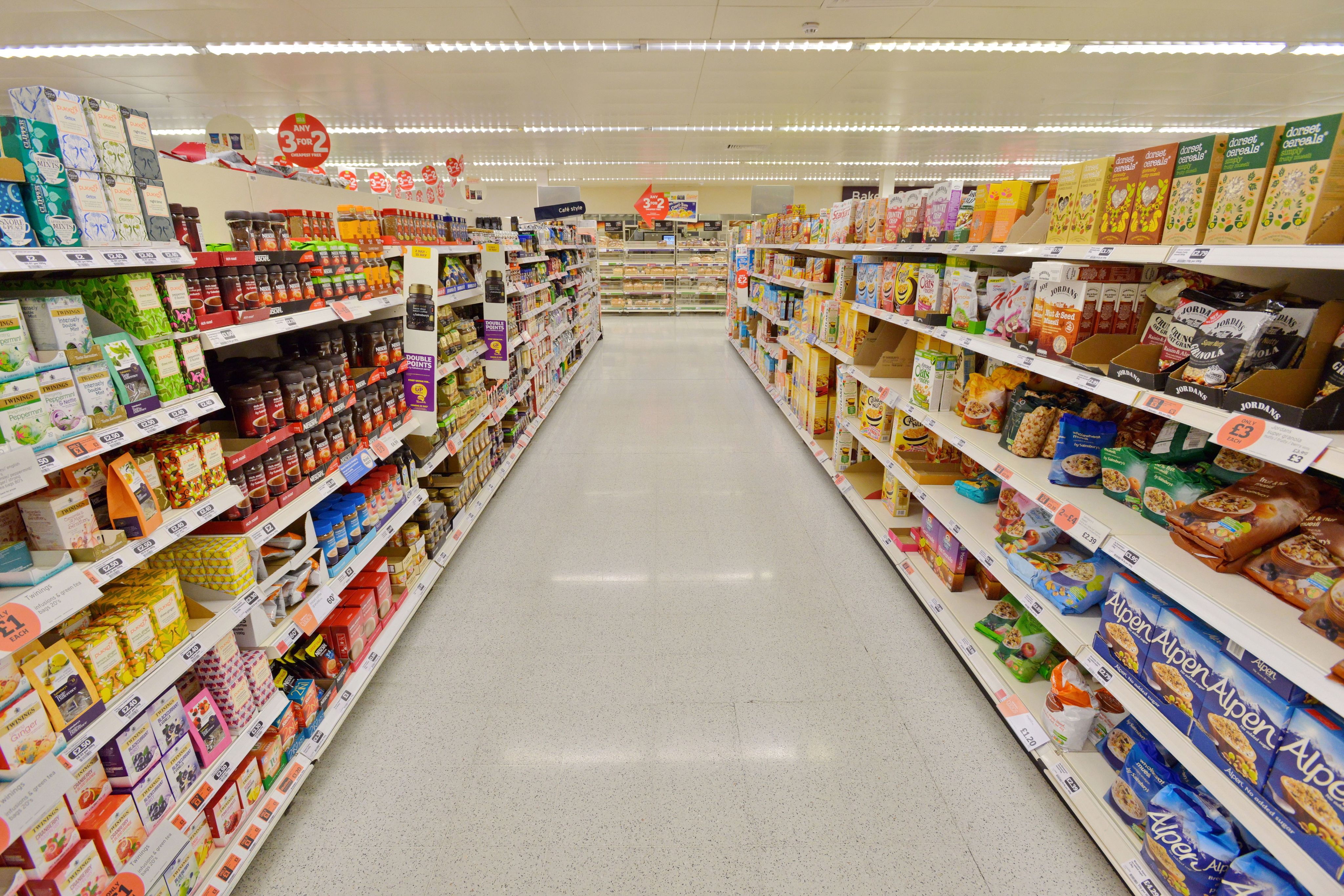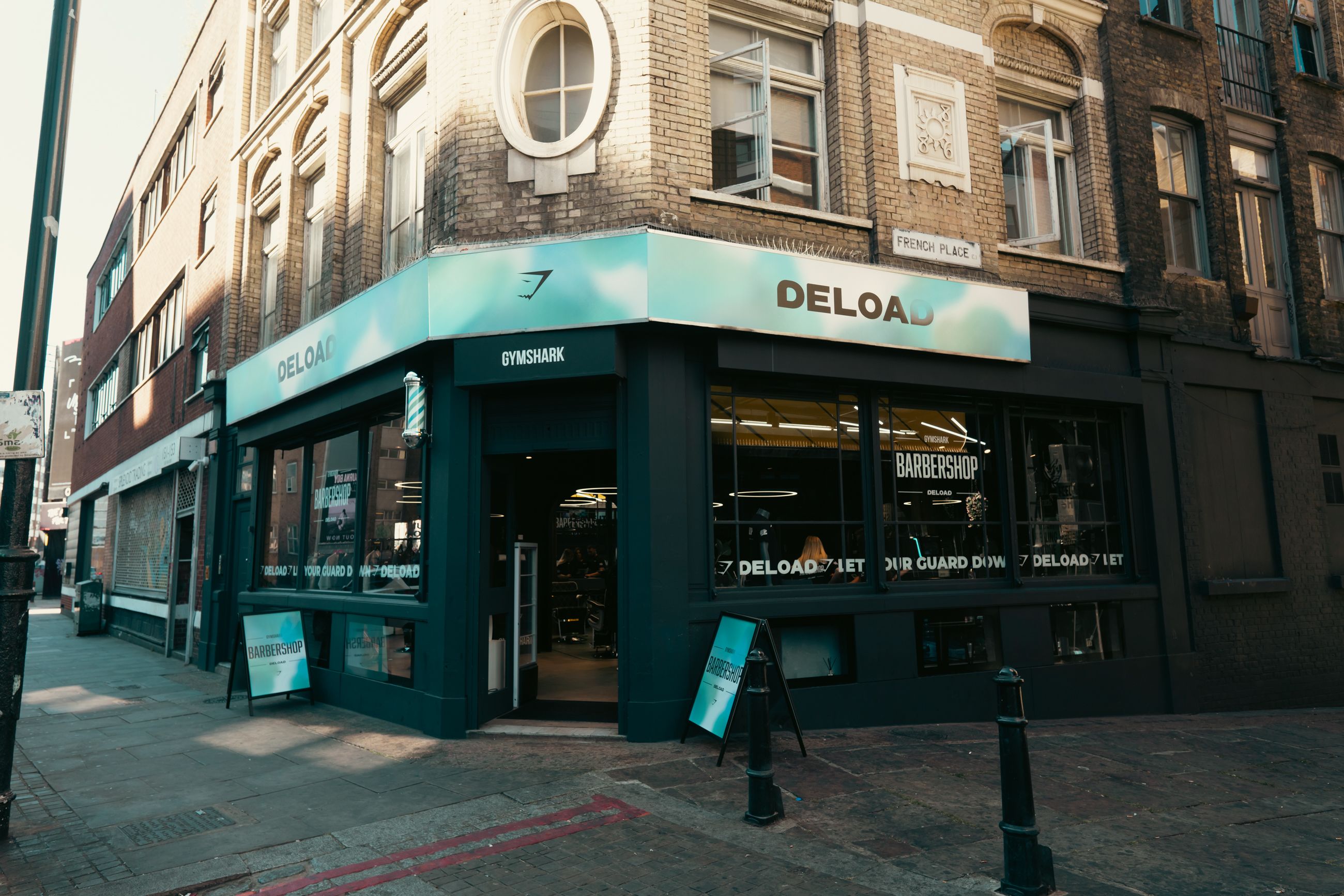
Retail is staring into the jaws of yet another crisis – Covid may be dimming in the memory, but the cost-of-living crunch is here to bite.
Since June and in the post-lockdown environment, profit warnings and problems have been evident in all sectors of the retail industry.
Adidas, Asos, Hotel Chocolat, Joules and Made are among the companies to rein in their forecasts in recent months as issues such as rising supply chain and procurement costs and new customer behaviours have impacted their sales and operations.
In 2022, the list of big-name retailer administrations – although shorter than in earlier stages of the pandemic – includes Studio Retail and Missguided (which have both since been absorbed by Frasers Group) and the convenience chain McColl’s, which was taken over by Morrisons.
Retailers have had no let-up. Fresh out of two years of lockdowns amid the coronavirus pandemic, they had been looking forward to a return to normality in 2022 and certainly by 2023. It was not to be.
The war in Ukraine and a cost-of-living crisis have presented retailers with a heady cocktail of inflationary pressures and supply chain challenges.
Inflation pushing 10% in the UK with the price of fuel, utilities and food all on an upward trajectory – and a related squeeze on people’s disposable income – is a major factor influencing consumer spending as 2023 looms. Question marks over just how high inflation will rise and how deep a recession is on the cards are creating uncertainty in the retail market and predictions of more difficulty to come.
Despite such challenges, the robustness of the industry continues to shine through in the interviews Retail Week undertook with retail chief executives, managing directors and founders.
Some 67% believe 2023 sales figures will be up on 2022 and 71% say they are likely to navigate next year with more or the same number of staff. This suggests major lay-offs are not part of the wider industry agenda, despite Co-op’s July decision to offload 400 employees from its Manchester head office.
Things can change quickly, of course.
Indeed, 88% of retailers Retail Week interviewed for Retail 2022 – albeit a different selection of industry leaders to those interviewed for this report – said they expected sales to grow year on year.
The reality for those we surveyed this year is that sales in 2022 are flatter than expected – 64% say sales will be up in 2022, while 14% say they will be the same or similar to 2021.
Consumer mindset shift
The rocketing cost of living has driven consumer sentiment down to its lowest level since at least 1974, reports GfK.
The GfK consumer sentiment index, the country’s longest-running survey of household finances, dived to a record low of -49 in September, from August’s reading of -44.
This is even worse than predicted by a poll of economists conducted by Reuters, who had expected a drop to -42.
Consumer sentiment has continued to fall over the past year as inflation has risen, soaring above 10% for the first time since 1982. Food prices have risen at the fastest rate since 2008 and household energy bills have doubled.
“There have been new lows in four out of the last five months and all measures are once again severely depressed,” said Joe Staton, GfK’s client strategy director. “Consumers are buckling under the pressure of the UK’s growing cost-of-living crisis driven by rapidly rising food prices, domestic fuel bills and mortgage payments. They are asking themselves when and how the situation will improve.”
In grocery, Kantar data shows Tesco, Sainsbury’s, Asda and Morrisons lost market share in the first half of 2022 as Aldi and Lidl – which position themselves as value chains – both grew their share of grocery sales. In September, Aldi dislodged Morrisons from the big four.
Despite these changes, grocery remains somewhat sheltered from the wider cost-of-living crisis as people will always need to eat. It is the discretionary retail sectors that are bracing themselves for bigger challenges.
“Disposable income will get hit. People’s shopping behaviours will change. We've seen that in previous recessionary periods”
Interest rates going up plays a major part in this, according to John Colley, executive chair and chief executive of drinks retailer Majestic Wine.
“I think they’ll go up again,” he adds.
“Disposable income will get hit. I think people’s shopping behaviours will change. We've seen that in previous recessionary periods.”
Andrew Hood, co-founder and managing director of homeware and furniture retailer Amara, says his business has had to be “discount-led” at times in 2022.
“We haven’t had to do it before,” he notes.
“During Covid, if the consumer wanted anything, they would buy it and they were price-insensitive. Whereas today, the consumer still has an appetite, but they’re much more minded to do a deal.”

Profit potential
BP’s chief executive of convenience in Europe, Tracey Clements, who also spent more than 16 years at Tesco, underlines the scale of the challenge facing all retailers today.
“For all good retailers at the moment, profitability is going to be under pressure because we are seeing such high inflation in the cost of goods and we don’t want to pass that on to our consumers,” she explains.
“Wherever possible we’re trying to offset; I’ve never quite seen such a high inflationary climate in my career, both in terms of cost of goods and in terms of things like utilities. Across the board, we are seeing some very high inflationary numbers.”
In such an uncertain environment, retailers must make tough decisions. They know they can’t pass all their rising costs on to the consumer but, for many, increasing their prices on certain products is the only way to ensure they have a viable business.
According to the British Retail Consortium (BRC) Shop Price Index, produced in partnership with research group Nielsen, July 2022 saw the highest rate of shop price inflation since the trade body began tracking this figure in 2005.
BRC chief executive Helen Dickinson said rising production costs – from the price of animal feed and fertiliser to the availability of produce, exacerbated by the war in Ukraine – as well as “exorbitant land transport costs” pushed food prices to rocket to 7%.
Dairy products, including lard, cooking fats and butter, were among the goods with the most prominent price rises.
Dickinson added that non-food prices were hit by escalating shipping and production costs, as well as ongoing disruption in China where many retailers source a significant percentage of their products.
As inflation hits 40-year highs, she said retailers were doing all they could to absorb as much of these costs as possible while introducing other efficiencies across their businesses. Electricals retailer Currys, for example, has promised to keep many of its popular products at 2021 prices, but elsewhere supermarket bills are rising rapidly. In July, Kantar said that consumers faced an estimated £454 annual increase compared with what they paid at the tills in 2021.
“The cost of the supply chain will increase dramatically and we cannot give all this cost right away to consumers. So we will have to decrease our margin”
All sectors are impacted by inflation, albeit to differing degrees.
“The big impact on profitability, I think, is the supply chain,” says Luca Donnini, chief executive of British luxury brand Temperley London.
“The cost of the supply chain will increase dramatically and we cannot give all this cost right away to consumers. So we will have to decrease our margin, unfortunately.”
Michael Thomson, founder and chief executive of lingerie retailer Pour Moi, says there is inflation “throughout the chain”.
“Wage growth coupled with recruitment issues will hold back our business,” he explains. “Distressed discounting by businesses in trouble is always challenging.”
Maria Hollins, managing director of Ann Summers, sums up the uncertainty and industry pressure: “Who knows what the final quarter will look like?”
She believes her business will still end the financial year in “positive territory” but lists full business rates, an unfavourable exchange rate, energy prices and increases to the payroll as cost headwinds.
“We’ve definitely got pressure on payroll, and not just because of increases in the national minimum wage but just generally the labour market is very tight, so where we have got vacancies or new roles created we are having to pay significantly higher than we would historically,” Hollins adds.
Ann Summers is not alone in facing this challenge.
Henrietta Rix, co-founder of fashion brand Rixo, says: “With inflation, everyone’s expecting to see that on their salaries.
“It’s harder to get people now and they are looking for higher salaries than you would have paid last year. So, I think our headcount is our second-biggest cost.”

Channel mix changes
At the height of the pandemic, many retailers spoke of their digital transformation strategy jumping by x number of years in y number of months, as they dealt with more online orders and deliveries than ever before.
The major grocers ramped up investment to prepare for a world with ecommerce as a greater contributor to total sales, while non-food players spoke of a new era.
John Roberts, chief executive of AO, said in November 2020 that the electricals market had changed “forever” as a result of the evolution in shopping behaviour in the early months of the pandemic. While there are obvious changes in how people shop generally now, his comment that “online is now the dominant retail channel for customers and manufacturers alike” remains contentious, especially in light of the electricals etailer’s three profit warnings since November 2021.
Office for National Statistics data shows that online sales as a percentage of total UK retail was 19.7% in February 2020, the month before the pandemic first locked down much of the country. But ecommerce rose to more than a third of overall trading on several occasions in 2020 and 2021 as shops shut to combat the coronavirus outbreak.
This figure has dropped from 30% in January 2022 to 25.3% in July 2022.

Shopify laid off 1,000 staff in July 2022
Shopify laid off 1,000 staff in July 2022

Gymshark unveiled a pop-up barbershop this summer
Gymshark unveiled a pop-up barbershop this summer
Canadian ecommerce platform provider Shopify’s decision in the summer to sack 1,000 staff brought the conversation about online growth back into the spotlight. Founder and chief executive Tobi Lütke acknowledged in July that the business made the “wrong” bet on the long-term growth of online retail post-pandemic.
In a letter to staff, Lütke said the share of online versus physical retail spend was “reverting to where pre-Covid data would have suggested it should be” in 2022 and the group’s “big strategic bet” during the pandemic – that ecommerce market share “would permanently leap ahead by five or even 10 years” – had not paid off.
Indeed, as the wider retail industry assesses what a suitable channel mix looks like, there are some interesting developments emerging.
“You read a lot of articles saying: ‘Well, this will be the death of it’ but we've actually seen bricks and mortar be insanely resilient. I don’t think the business is going to go from 80:20 to 60:40”
Doug Putman, owner of Putman Investments, which owns HMV, says that during Covid “obviously online became a massive, massive amount” in terms of percentage of retailers’ revenue stream.
“You read a lot of articles saying: ‘Well, this will be the death of it’ but we've actually seen bricks and mortar be insanely resilient, with people coming back into it,” he explains.
“I would think that our online business will continue to grow, but I don’t think it’s going to grow in this massive way. I don’t think the business is going to go from 80:20 to 60:40.”
Putman predicts that bricks-and-mortar retail will account for the majority of sales for HMV, with online unlikely to become a quarter of sales in the near future. He adds that, for retailers like his and other non-food businesses, Covid showed “there is a lot of enjoyment in actually going in and shopping”. (For more on this, head to chapter 4.)
John Lewis, meanwhile, closed 16 loss-making stores in the pandemic and said its website accounted for 60% to 70% of sales in 2021, compared with 40% before the pandemic.
Each retailer needs to do its own calculations, making it impossible to say what the ideal channel mix is for the industry overall. Indeed, the key is to maintain agility here and make decisions based on what resonates with the respective target audience.
Digital-native brand Gymshark is opening a multistorey physical location in London’s Regent Street. It also unveiled a pop-up barbershop format in July, encouraging men to visit, take advantage of the service and open up about their mental health.
In contrast, ecommerce player AO has closed its physical concessions in Tesco stores to focus solely on online for now. Women’s clothing and accessories brand Skinnydip – which had 20 stores before the pandemic – has closed them all to focus on wholesale and online while its strategy is refreshed.
Skinnydip co-founder Lewis Blitz spoke at Retail Week’s Stores Week summit in May, saying bricks and mortar should be “at the heart” of any brand’s mission and that his company does want to open stores again. However, he also called for more flexible retailer-landlord partnerships.
There are signs that landlords are listening, with Landsec and Hammerson among the property owners now offering retailers shorter and more flexible leases in an attempt to fill space. Many in the industry are also calling for a shift to rent based on turnover.
As always, the best-run retailers will weigh up channel strategy based on customer demand, cost of operation and business opportunity. They will also think about the influence different channels have on each other, rather than seeing them as competing for revenue within their own organisations.
CEO view: How is the cost-of-living crisis impacting your business and how do you plan to deal with it?
Paul Marchant, chief executive, Primark
“I think for us, as a retailer who sits where we do on the price architecture ladder, we believe that we may benefit from some customers trading into Primark. But, having said that, it's difficult for everybody; we’re all feeling the pinch. So how that actually manifests itself in terms of absolute trade for each retailer remains uncertain. However, retaining that position of best value and price leadership, for us, remains critical, even if in absolute terms some of our prices are going up.”


Will Kernan, chief executive, River Island
“We have wide-ranging plans [to deal with the cost-of-living crisis]. Clearly, we need to support and reinforce our value credentials across our ranges to help our customers at this difficult time. We are investing further in what we’re calling ‘foundation lines’, i.e. core fashion essentials – not just maintaining, but investing in prices there.
“We’re also investing in quality and design at the top end of our price architecture. There is significant cost price inflation taking place, some of which we will have to absorb within our P&L, which our suppliers are supporting us with.”
J. Michael Prince, president and chief executive, USPA Global Licensing (U.S. Polo Assn.)
“Inflation will have the biggest impact on profitability. We’re seeing record price increases at a level I’ve never seen before – and I’ve been in this industry for 15 to 20 years.
“We can’t pass all of that along to the consumer. Our supply chain partners will have to take some of it and then, with our licensing partners, we’ll have to take some as well. It will be spread among the different groups.”


Mark Saunders, chief executive, Mamas & Papas
“Probably the biggest concern is consumer confidence. We know we’re going to have inflation for the rest of this year, and I’m sure a sizable part of next year as well, and the inflation will be higher than average wage rises so disposable income will get squeezed. The interest rate rise is further squeezing consumer spending power. That has to have an impact on everybody and we’re not immune to those pressures. So, as fast as we try to get growth going, that will be slowing it down. You have to look hard at how you mitigate those rising costs.”
Peter Jelkeby, country manager for UK and Ireland, Ikea
“I think we have a very strong affordability agenda. Leading with the lowest price is part of our DNA. We’re going to work even more to position ourselves on affordability, both the prices themselves and also how you communicate those prices, how you actually explain the value chain. Maybe ‘value for money’ is not only about the lowest price; it’s also about when you go up the price ladder. Is it worth it to spend some more?”


Gavin Peck, chief executive, The Works
“No retailer is immune from the current cost-of-living crisis as it is impacting consumer spending across the sector. As a value retailer, we are committed to ensuring that customers can continue to rely on The Works as a destination for great-value products to inspire reading, learning, creativity and play, and are doing all we can to keep prices as low as possible for customers while also protecting our profitability. It’s a balancing act that we are reviewing and refining on a continuous basis.”


